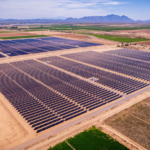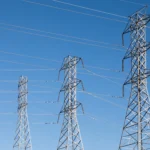The India Meteorological Department (IMD), along with other institutions under the Ministry of Earth Sciences (MoES), has been integrating artificial intelligence (AI) and machine learning (ML) into its weather and climate forecasting models. The department is leveraging AI-based tools to improve both short-term and long-range weather predictions, providing valuable services to farmers, fishermen, and other stakeholders across the nation.
Key AI-Driven Innovations in Weather Forecasting
IMD and MoES institutions have made significant strides in AI and ML applications for weather forecasting. Some of the key tools and technologies used include:
-
Advanced Dvorak Technique (AiDT): An AI-powered method for estimating cyclone intensity.
-
Hybrid AI-Dynamical Models: Combining AI with traditional dynamical models to enhance weather predictions.
-
Short-range Global Forecasting: Using AI to improve the accuracy of short-range forecasts.
-
Downscaling of Precipitation Data: AI techniques for fine-tuning precipitation data, which helps in predicting localized rainfall.
-
Fire Location Forecasting and Fog Forecasting: AI-based models for forecasting fire locations and fog formation.
-
Lightning/Thunderstorm Forecasting: AI models to predict severe weather events such as thunderstorms and lightning strikes.
-
Deep Learning for Precipitation: Leveraging deep learning to improve global precipitation forecasts in numerical weather prediction systems.
Additionally, MausamGPT, an AI-driven chatbot, is under development. It is designed as a climate service advisor, providing personalized weather updates and guidance to farmers and other stakeholders.
Empowering Farmers with Localized Weather Forecasts
IMD has also introduced localized weather forecasts at the Gram Panchayat level, a major initiative that aims to assist farmers with crucial weather information. In partnership with the Ministry of Panchayati Raj (MoPR), IMD launched the Gram Panchayat Level Weather Forecasting (GPLWF) system, which covers nearly all of India’s Gram Panchayats.
The GPLWF provides weather forecasts on parameters such as temperature, rainfall, humidity, wind speed, and cloud conditions — data essential for farmers to make informed decisions on activities like sowing, harvesting, and irrigation. The platform provides weather updates up to a 36-hour lead time, offering forecasts every 3 hours for the first 5 days and 6-hourly updates for the next 5 to 10 days.
Launch of Bharat Forecasting System (BharatFS)
In a major development, the Indian government unveiled the Bharat Forecasting System (BharatFS) on May 27, 2025. This high-resolution numerical weather prediction model has a spatial resolution of 6 km, compared to the previous 12 km resolution of the global forecasting system (GFS). BharatFS promises finer, more accurate rainfall forecasts, down to the panchayat level, making it a game-changer for localized weather predictions. This model offers forecasts for up to 10 days, covering both short-range and medium-range weather patterns.
Additionally, the Climate Forecast System version 2 (CFSv2) coupled model is being used for generating extended-range weather forecasts (up to 4 weeks) at the meteorological sub-division level.
Advancing Agricultural Advisory Services
To further support farmers, IMD collaborates with Agromet Field Units (AMFUs) to issue Agromet Advisories twice a week (on Tuesdays and Fridays). These advisories, available in both English and regional languages, provide farmers with actionable insights based on observed and forecasted weather. The National Weather Forecasting Centre (NWFC), IMD’s Regional Meteorological Centres (RMCs), and other regional centers issue these advisories to ensure that farmers are well-prepared for weather events like droughts, floods, and storms.
Strengthening Technological Infrastructure
The MoES has recently upgraded its High Power Computing System (HPCS), boosting the computing capacity to 22 PetaFLOPS. Approximately 10% of this capacity is dedicated to Graphics Processing Units (GPUs) designed specifically for AI/ML research in weather forecasting. The upgraded system is expected to further enhance the accuracy and timeliness of weather predictions.
Additionally, IMD is integrating AI-based data-driven models with traditional Numerical Weather Prediction (NWP) systems to improve forecasting skills over the Indian region and surrounding seas, including the Bay of Bengal and the Arabian Sea. These advancements aim to make weather warnings more accurate, timely, and actionable for stakeholders across the country.
Increasing Accessibility of Weather Information
To ensure that weather information reaches a broad audience, IMD has enhanced the accessibility of its services. Mobile apps like ‘Meghdoot’ and ‘Mausam’, along with platforms like WhatsApp and Facebook, are used to disseminate location-specific forecasts and agriculture advisories to farmers. IMD has also integrated its services with the IT platforms of 18 state governments, allowing users to access weather data in both English and regional languages.












